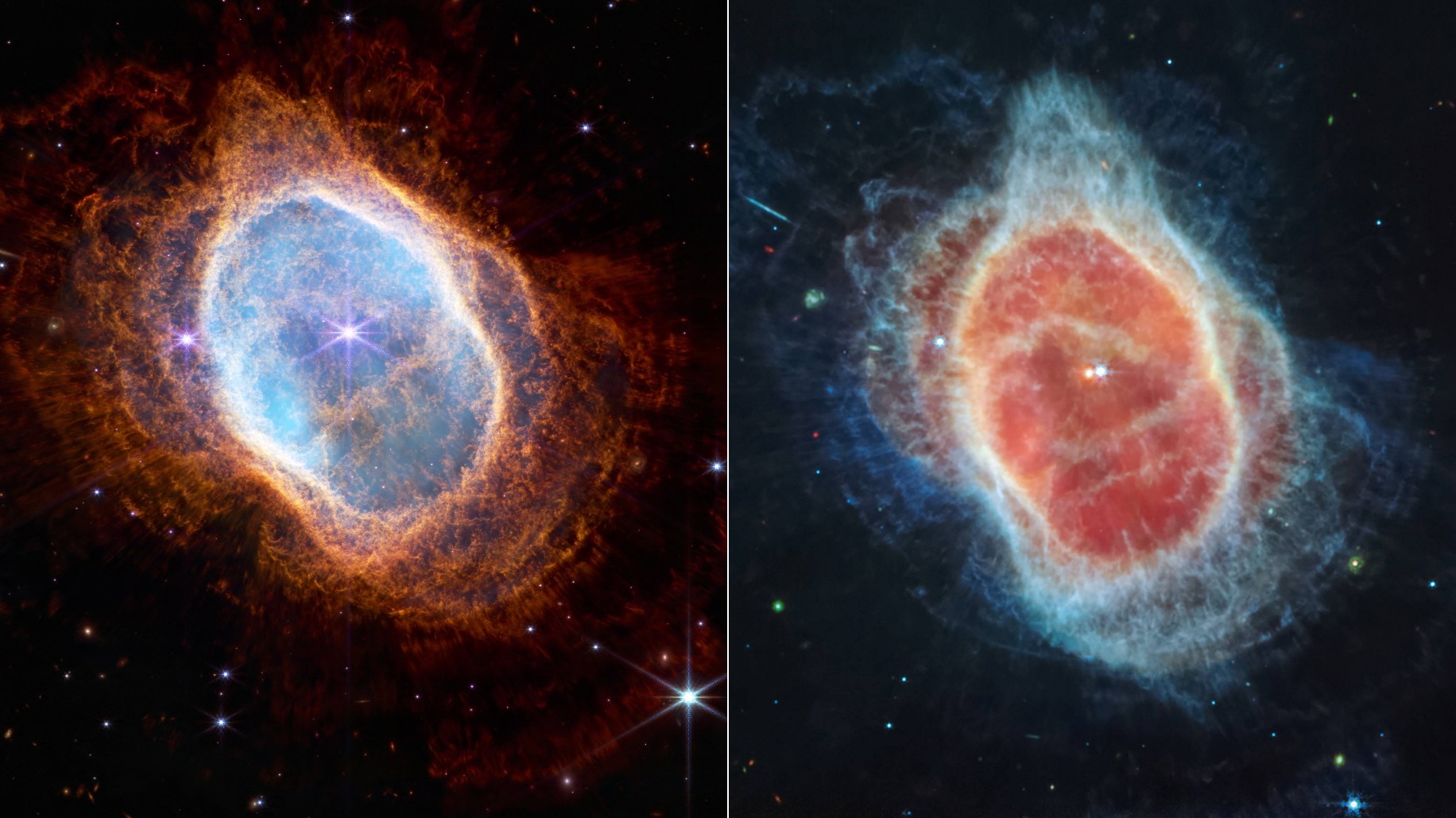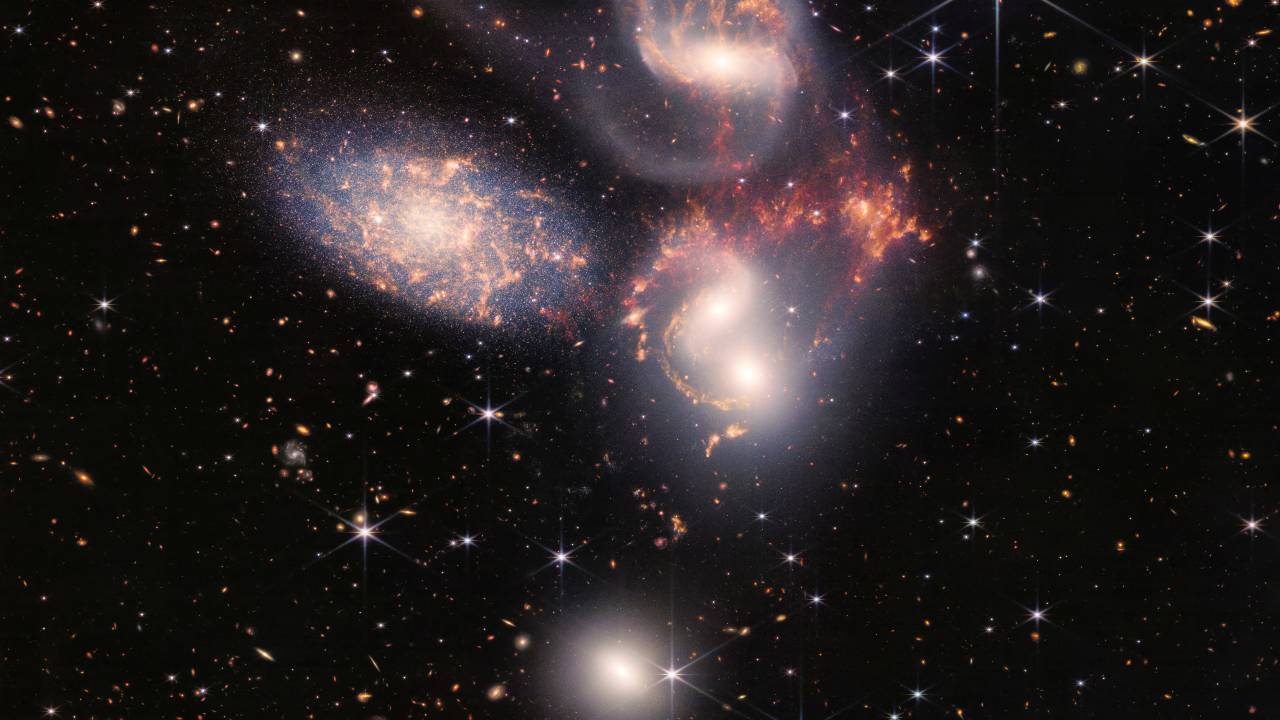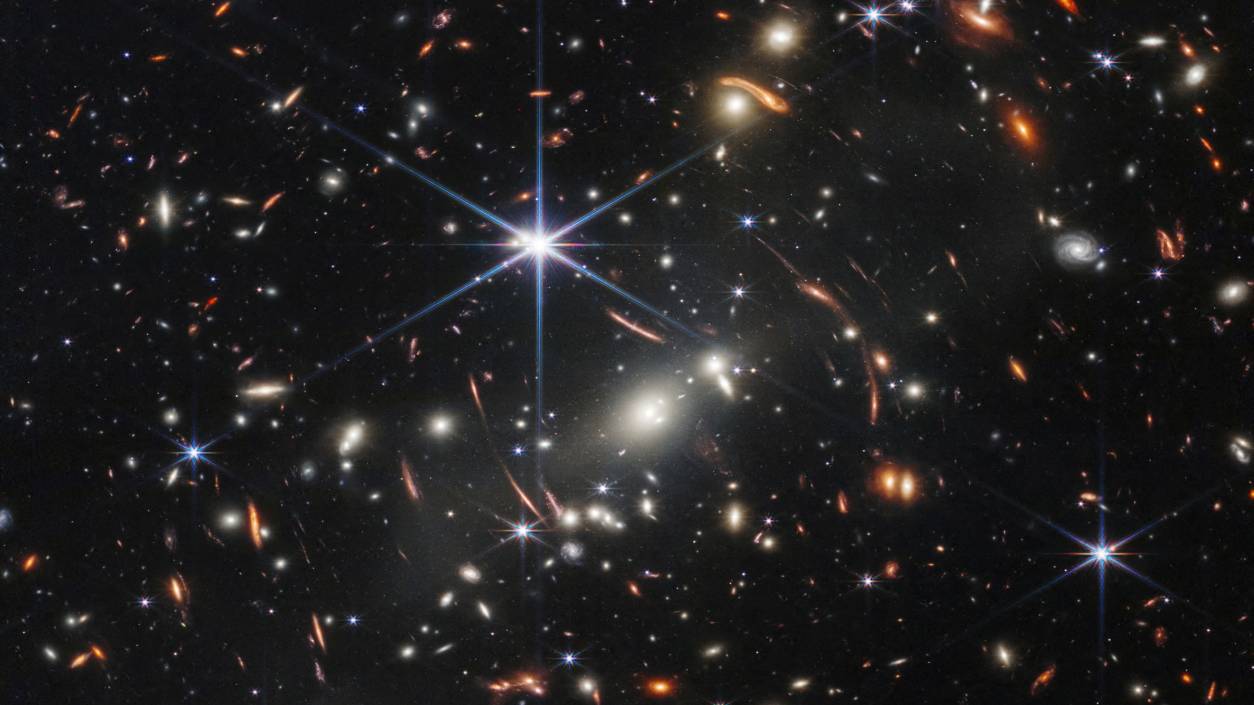
The Southern Ring shows a planetary nebula caused by a dying star. /NASA/Reuters
The Southern Ring shows a planetary nebula caused by a dying star. /NASA/Reuters
Images of a "stellar nursery," a roaring sphere of gas around a dying star and a "cosmic dance" between galaxies are among several breathtaking pictures taken by U.S. space agency NASA's $10bn James Webb Space Telescope, released today.
The first picture had already been unveiled on Monday at the White House, with U.S. President Joe Biden saying "We can see possibilities no-one has ever seen before. We can go places no-one has ever gone before."
READ MORE:
Robo-arm could help millions
What is tire pollution?
MyFirstJob: How industry leaders started out
The key objectives of Webb's telescope - the successor to the famous Hubble Space Telescope – include taking pictures of the very first stars to shine in the Universe from more than 13.5 billion years ago and finding habitable planets beyond our solar system.

The 'Cosmic Cliffs' of the Carina Nebula. It's one of the largest and brightest nebulae in the sky, roughly 7,600 light-years from Earth. Nebulae are stellar nurseries. /NASA/Reuters
The 'Cosmic Cliffs' of the Carina Nebula. It's one of the largest and brightest nebulae in the sky, roughly 7,600 light-years from Earth. Nebulae are stellar nurseries. /NASA/Reuters
On Tuesday, four more photos were published. With one exception, the latest images showed parts of the universe seen by other telescopes. But the sheer power of Webb's telescope, distant location off Earth and use of the infrared light spectrum exhibited them in new light.
"Every image is a new discovery and each will give humanity a view of the humanity that we've never seen before," NASA Administrator Bill Nelson said, showing "the formation of stars, devouring black holes."
"We've really changed the understanding of our universe," added European Space Agency director general Josef Aschbacher.
READ MORE: How we went from Galileo's tube pointed at the moon, to the James Webb telescope

Stephan's Quintet is a collection of five galaxies is about 290 million light-years away. /NASA/Reuters
Stephan's Quintet is a collection of five galaxies is about 290 million light-years away. /NASA/Reuters
The European and Canadian space agencies joined NASA in building and launching the powerful telescope.
Amber Straughn, Webb deputy project scientist, said: "Today for the first time we're seeing brand new stars that were previously completely hidden from our view.
"We see examples of bubbles and cavities and jets that are being blown out by these newborn stars, and even some galaxies lurking... We see some examples of structures that we don't even know what they are. The data is so rich."
Dr Jane Rigby, NASA operations project scientist for the Webb mission, revealed how the images had gone down with Biden and Vice President Harris.
"We really geeked out," Rigby said. "We had a closed door session where we walked through all the images and they were so thrilled.”

The first color image light from galaxies more than 13bn years ago was released at the White House on Monday. /NASA/Reuters
The first color image light from galaxies more than 13bn years ago was released at the White House on Monday. /NASA/Reuters

